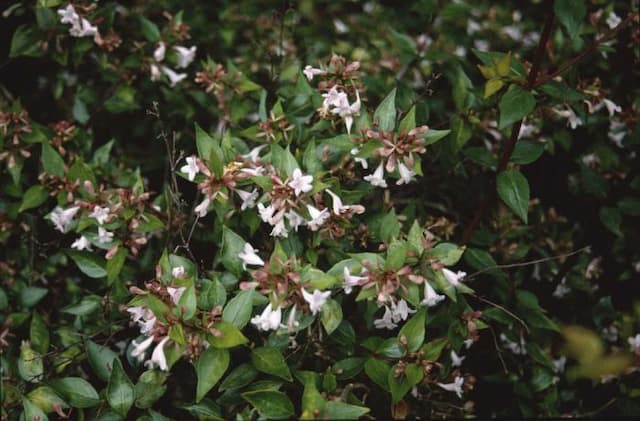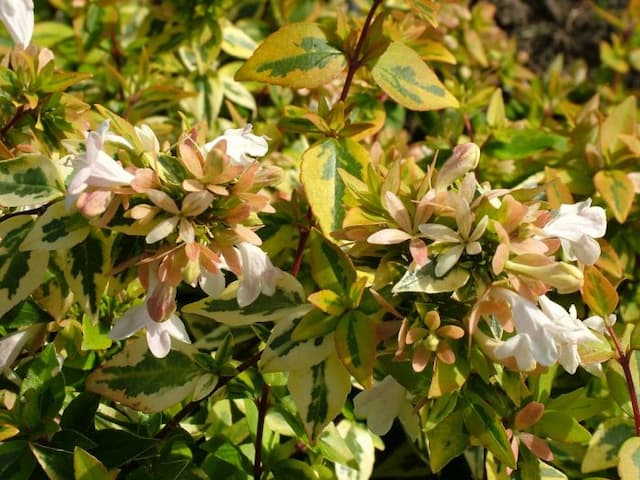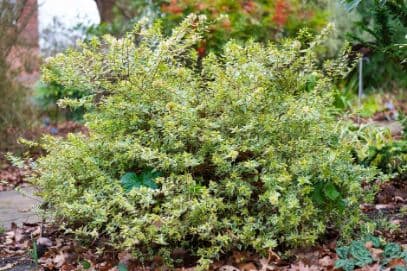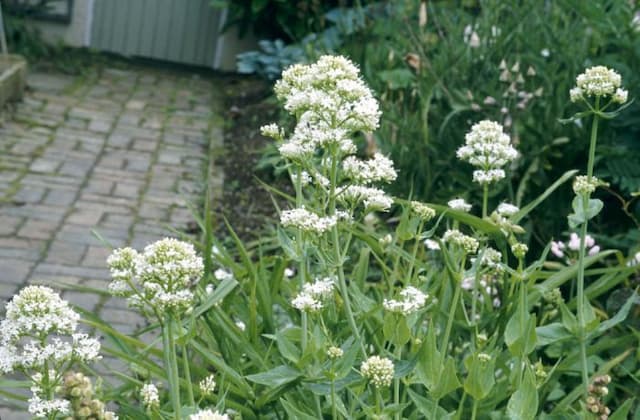Fly honeysuckle Lonicera xylosteum






ABOUT
Lonicera xylosteum, commonly known as fly honeysuckle, is a deciduous shrub recognizable by its paired leaves and flowers. The leaves are oval-shaped and come to a gentle point, displaying a green hue that may vary in intensity with the seasons. This plant produces flowers that are creamy white to yellowish in color, and they typically grow in pairs alongside the branches. Delicate and tubular, these flowers are a favorite among pollinators such as bees and butterflies. As the flowers fade, the fly honeysuckle produces translucent red berries that dangle from the branches, offering a striking contrast against the green foliage. These berries can persist into the early winter months, providing a visual interest even after the leaves have fallen. The overall impression of the fly honeysuckle is a plant with a bushy habit, adorned with subtle yet alluring flowers followed by bright berries through the growing season.
About this plant
 Names
NamesFamily
Caprifoliaceae.
Synonyms
Fly Woodbine, Dwarf Honeysuckle, European Fly Honeysuckle, Fly Honeysuckle.
Common names
Xylosteon album, Xylosteon luteum, Xylosteum dumetorum, Caprifolium dumetorum, Caprifolium xylosteum, Chamaecerasus xylosteum, Lonicera dumetorum, Lonicera glabra, Lonicera nigra, Lonicera xerocarpa, Xylosteon vulgare.
 Toxicity
ToxicityTo humans
The common name for Lonicera xylosteum is fly honeysuckle. It is considered poisonous to humans, and consuming parts of fly honeysuckle can lead to toxicity. The berries, in particular, contain saponins and glycosides, which are toxic substances that can cause gastrointestinal upset if ingested. Symptoms of poisoning from consuming this plant may include vomiting, diarrhea, abdominal pain, and nausea. In severe cases, more serious symptoms like dilated pupils and increased heartbeat can occur. It is important to seek medical attention if ingestion is suspected.
To pets
Fly honeysuckle is also toxic to pets. Ingesting parts of the plant, especially the berries, can lead to similar toxicity symptoms as in humans. Pets may experience vomiting, diarrhea, abdominal pain, and lethargy. The glycosides and saponins found in the plant may also cause more severe symptoms such as difficulty breathing or an increased heart rate. If you suspect your pet has ingested fly honeysuckle, it is essential to contact a veterinarian promptly.
 Characteristics
CharacteristicsLife cycle
Perennials
Foliage type
Deciduous
Color of leaves
Green
Flower color
Cream
Height
6 feet 1.83 meters
Spread
6 feet 1.83 meters
Plant type
Shrub
Hardiness zones
4
Native area
Eurasia
Benefits
 General Benefits
General Benefits- Wildlife Habitat: Lonicera xylosteum, commonly known as fly honeysuckle, provides shelter and nesting sites for various bird species and other wildlife.
- Pollinator Attraction: The plant produces fragrant flowers that attract bees, butterflies, and other pollinating insects, encouraging biodiversity.
- Landscape Uses: Fly honeysuckle can be used in landscape design for hedges, screens, or as part of mixed shrub borders for aesthetic appeal.
- Erosion Control: The shrub's root system can help stabilize soil and control erosion on slopes or in areas prone to soil loss.
- Ornamental Value: With its paired red berries and vibrant green foliage, fly honeysuckle provides visual interest in gardens and parks.
- Food Source for Wildlife: The berries of Lonicera xylosteum are consumed by birds and small mammals, offering them a natural food supply.
 Medical Properties
Medical Properties- Diuretic: Lonicera xylosteum, commonly known as fly honeysuckle, has been used in traditional medicine for its diuretic properties, to promote the excretion of urine.
- Laxative: In some folk medicine, it has also been used for its laxative effects to alleviate constipation.
- Antibacterial: Constituents of the plant may have antibacterial effects, however, this use is not scientifically substantiated for clinical applications.
- Sedative: There is also historical mention of its use as a sedative in herbal medicine, though this is not backed by modern research.
 Air-purifying Qualities
Air-purifying QualitiesThis plant is not specifically known for air purifying qualities.
 Other Uses
Other Uses- Lonicera xylosteum, commonly known as Fly honeysuckle, can be used as a food source for wildlife; its berries attract birds and provide them with nourishment, especially in late summer and autumn when other food sources are scarce.
- The stems and branches of Fly honeysuckle can be used in basket weaving due to their flexibility when young and toughness when dried.
- The plant is sometimes incorporated into landscaping for ornamental purposes, particularly in wildlife gardens, where its fruit can be used to create visual interest.
- Fly honeysuckle's flowers can be used to make natural dyes for fabrics, producing colors ranging from green to yellow depending on the mordant used.
- The wood of the Fly honeysuckle is suitable for small woodworking projects, such as crafting handles for tools or carving intricate decorative items due to its hardness.
- In some cultures, the branches of Fly honeysuckle are used in traditional ceremonies or as a symbolic decoration during specific festivals.
- Fly honeysuckle can act as a host plant for certain butterfly species, providing a habitat and food source for their caterpillars.
- The plant's dense growth habit can be utilized for privacy hedges or as a natural barrier to mark boundaries or conceal unsightly areas.
- Fly honeysuckle bushes can be used in erosion control due to their extensive root systems that help stabilize soil on slopes and disturbed areas.
- Some beekeepers place their hives near Fly honeysuckle to take advantage of its seasonal blooms, thereby providing a nectar source for honeybees.
Interesting Facts
 Feng Shui
Feng ShuiThe European fly honeysuckle is not used in Feng Shui practice.
 Zodiac Sign Compitability
Zodiac Sign CompitabilityThe European fly honeysuckle is not used in astrology practice.
 Plant Symbolism
Plant Symbolism- Love and Devotion: The common name of Lonicera xylosteum is Fly Honeysuckle. As a member of the honeysuckle family, this plant often symbolizes love and devotion, inspired by the way its vines can tightly wind around structures, just as love can envelop a person.
- Generosity and Nourishment: Fly Honeysuckle produces berries that feed wildlife, representing the giving of oneself and nourishing others.
- Bonding and Togetherness: Its twining growth habit can symbolize close-knit relationships and the bonds that hold people together.
- Protection: In folklore, honeysuckles are sometimes thought to ward off evil, with their sweet fragrance acting as a deterrent to negative forces.
- Sweetness of Life: The plant's sweet-smelling flowers can be indicative of the sweetness and joy in life, encouraging an appreciation for small pleasures.
 Water
WaterThe common snowberry, also known as Lonicera xylosteum, prefers even moisture and should not be allowed to dry out completely. Water the plant deeply to encourage root growth when the top inch of soil feels dry, which could be once a week during active growth periods. The amount of water required can vary with weather conditions, but a general guideline is about 1 gallon for smaller plants and up to 2.5 gallons for larger, established plants, applied at the mentioned frequency. In the winter dormancy period, reduce the frequency of watering to match the plant's reduced needs.
 Light
LightThe common snowberry thrives in full sun to partial shade. The best spot for this plant is an area that receives at least 4 to 6 hours of direct sunlight per day, but it can also tolerate some shade, especially during the hottest part of the afternoon. Avoid deep shade, as this can reduce flowering and can make the plant leggy.
 Temperature
TemperatureThe common snowberry is adaptable to a range of temperatures but prefers a temperate climate. It can survive winter temperatures as low as -30°F and summer temperatures up to 100°F. The ideal temperature range for promoting growth and flowering is between 60°F and 75°F.
 Pruning
PruningPrune the common snowberry to maintain its shape and encourage a more robust and healthy plant. The best time for pruning is in late winter or early spring before new growth begins. Pruning can be done annually or biennially, removing up to one third of the oldest stems to ground level to rejuvenate the plant.
 Cleaning
CleaningAs needed
 Soil
SoilFly honeysuckle thrives in well-drained, loamy soil with a pH of 6.0 to 7.5. An ideal soil mix can be composed of two parts garden soil, one part sand, and one part peat moss to ensure proper drainage and aeration for the roots.
 Repotting
RepottingFly honeysuckle, being a woody shrub, doesn't require frequent repotting. It should be replanted when it outgrows its current space or every few years to refresh the soil, usually no more than once every 4-5 years.
 Humidity & Misting
Humidity & MistingFly honeysuckle prefers a moderate level of humidity and can tolerate the natural outdoor humidity levels found in its growing zones. It does not require any special humidity adjustments when grown outside in its preferred environment.
 Suitable locations
Suitable locationsIndoor
Ensure bright light and space for growth.
Outdoor
Plant in sun to partial shade; water regularly.
Hardiness zone
4-7 USDA
 Life cycle
Life cycleLonicera xylosteum, commonly known as Fly Honeysuckle, begins its life cycle as a seed, which after dispersing from the parent plant, germinates when conditions are suitable. The seedling emerges and establishes roots, followed by the shoot which grows into a young plant with characteristic opposite leaves. As it matures, the plant develops woody stems and can grow into a deciduous shrub reaching up to 2 meters tall. Fly Honeysuckle blooms in late spring to early summer with creamy white flowers that are pollinated by insects, leading to the formation of red berries as the fruiting stage which then become a food source for birds, aiding in seed dispersal. The plant's annual growth cycle includes a period of dormancy during the winter months when leaves are shed. Over successive years, the shrub may spread through suckering, creating a larger cluster of shrubs as it completes its life cycle.
 Propogation
PropogationPropogation time
Spring to early summer
Lonicera xylosteum, commonly known as fly honeysuckle, is typically propagated through softwood cuttings. This method is most effective when carried out in late spring to early summer. To propagate, one must select a healthy stem and cut a 4-6 inch (10-15 cm) section just below a leaf node. The lower leaves are removed, and the cut end is dipped in rooting hormone to encourage root development. The cutting is then placed in a well-draining potting mix and kept in a humid environment with indirect light. Rooting usually occurs within 4 to 6 weeks, at which point the new plant can gradually acclimate to less humid conditions before it is transplanted to its final location.









